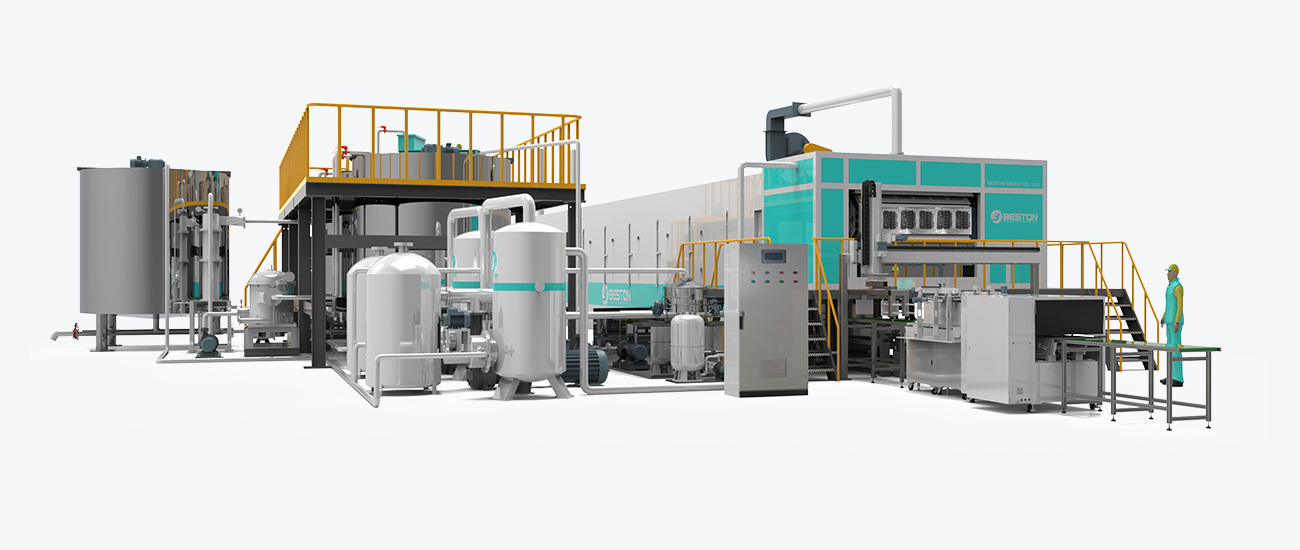
Customizing mold design for diverse packaging applications is a pivotal aspect of optimizing output and functional performance in pulp molding production. The precision and adaptability of modern pulp moulding machines allow for highly specified configurations across industries, from agriculture to consumer goods. Mold customization is not merely a design exercise—it is a technical imperative that determines the efficiency, durability, and presentation of the final product.
Understanding the Role of Mold Architecture
Mold design governs the structural form and material distribution in molded pulp products. Each packaging solution, whether for eggs, electronics, or beverages, demands a unique mold configuration to match its shape, fragility, and volume constraints. For instance, a mold used in a quail egg tray making machine differs significantly from one used in an egg carton maker or coffee cup tray making machine, not just in dimensions but also in texture detailing and drainage features.
Molds are typically constructed from high-grade aluminum alloy or copper for optimal thermal conductivity and corrosion resistance. These materials facilitate efficient drying and contribute to prolonged mold life. The surface finish, vent design, and mesh density must be carefully calibrated during fabrication to ensure uniform pulp deposition and demolding consistency.

Classification by Packaging Function
Pulp molding machine manufacturers segment mold designs based on application functionality:
-
Protection-Based Molds: Applied in industrial packaging, these molds incorporate reinforced ribs and shock-absorbing cavities.
-
Display-Oriented Molds: Used in retail-focused items like fruit trays or egg cartons, these molds emphasize uniform aesthetics and smooth contours.
-
Space-Optimized Molds: Designed for logistics efficiency, these molds prioritize compact nesting and stackability, such as those used in coffee cup tray making machine.

Customization Workflow
The customization process begins with 3D modeling. CAD software is used to simulate the pulp flow and airflow during the forming and drying phases. Once the digital mold meets structural and dimensional tolerances, CNC machining ensures precise reproduction of the model.
Critical steps include:
-
Material Analysis: Identifying pulp type (e.g., recycled paper, virgin pulp) to inform mesh aperture and mold porosity.
-
Thermal Mapping: Designing channels for consistent temperature distribution to avoid warping during hot pressing.
-
Prototype Validation: Producing trial molds for real-time testing on machines such as an egg carton maker or quail egg tray making machine.
Each mold must be compatible with the forming and transfer mechanisms of the specific equipment. For instance, suction force requirements vary between small-cavity trays and large-form packaging, necessitating adjusted mold vacuum zones.
Adaptability and Scalability
Customized mold designs must not only serve current production goals but also anticipate scaling. This is particularly relevant for pulp molding machine manufacturers catering to clients with evolving product lines, including coffee cup tray making machine. Modular mold bases and interchangeable inserts provide operational flexibility, reducing downtime during product changeovers.
Additionally, mold design influences water consumption, drying time, and reject rates—key metrics in sustainable pulp molding operations. Investing in a well-engineered mold translates directly into higher throughput and reduced energy overhead.
Conclusion
Customizing molds for a pulp moulding machine involves a convergence of engineering precision and material science. Whether manufacturing for niche applications like a quail egg tray or mainstream items via an egg carton maker, tailored mold designs are fundamental to achieving structural integrity, visual appeal, and production economy. As packaging demands diversify, the ability to engineer bespoke molds remains a core competency for competitive pulp molding operations.